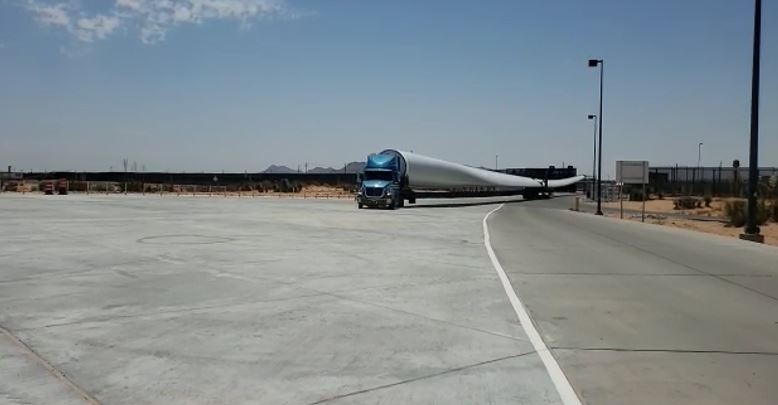SANTA TERESA, N.M. — U.S. Customs and Border Protection (CBP), the General Services Administration (GSA), and TPI Composites, Inc. announced a formal partnership on a small-scale infrastructure improvement project at Santa Teresa Land Port of Entry (LPOE).
Under CBP’s Donations Acceptance Program, CBP and GSA entered into an agreement with TPI Composites, Inc. in December of 2020 to expand the entrance of the LPOE and thereby facilitate the processing of oversized cargo. This agreement marks the first time a private entity has partnered with CBP and GSA under the Donations Acceptance Program authority. The project consists of expanding the concrete pavement, installing a new gate and chain link fence, and relocating a light pole to increase the turn radius through the LPOE.

“The expansion of the infrastructure at the Santa Teresa Port of Entry is critically important to ensuring the facilitation of lawful trade and travel,” said Santa Teresa Port Director Fernando Thome. “These improvements will greatly improve our ability to process oversized cargo in a safe, efficient, and expeditious manner, in effect, positively impacting our country’s economic security.”
TPI Composites, Inc., a corporation incorporated in Delaware, ships oversized wind turbine blades produced in Juarez, Mexico through the Santa Teresa LPOE. Their largest shipments measure about 78 yards long and the company continues to increase their sizing. As the size of wind turbine blades has increased over the years, some shipments have been delayed at the port. Expanding the entrance of the port will facilitate the movement of oversized shipments and improve the flow of traffic.
“This project not only benefits the commercial interests on both sides of the border, but it also reflects a high level of collaboration and cooperation between the USA and Mexico, and between the public and private sectors,” said Charlie Hart, GSA’s Southern Border Executive. “It truly requires a team effort to enable such a project to reach this stage.”
Although considered a small-scale project, the infrastructure improvements will provide substantial benefits to all traffic and shipments processed through the port. Under the Donations Acceptance Program, small-scale projects are identified by a minimal size, scope, complexity, and cost of $5 million or less. These projects are approved, designed, and constructed in a shorter timeframe than large-scale projects with moderate to significant size, scope, and complexity that cost more than $5 million.

“Successful completion of this project at our port of entry positions TPI Composites, Inc. as a wind blade manufacturer that can effectively accomplish big projects and deliver longer wind blades,” said TPI Composites, Inc. Senior Vice President Paulo Silva. “By working together and coordinating efforts with our CBP authorities we have completed a high impact project for our company that will facilitate trade and attract more business.”
Pursuant to 6 U.S.C. § 301a, and more generally, the Homeland Security Act of 2002, 6 U.S.C. §§ 112 et seq., as amended, CBP and GSA are authorized to accept donations of real property, personal property (including monetary donations) and non-personal services from private sector and government entities. Accepted donations may be used for port of entry construction, alterations, operations, and maintenance activities.
Public-private partnerships are a key component of CBP’s Resource Optimization Strategy and allow CBP to provide new or expanded services and infrastructure at domestic ports of entry. For more information, visit www.cbp.gov/DAP.


